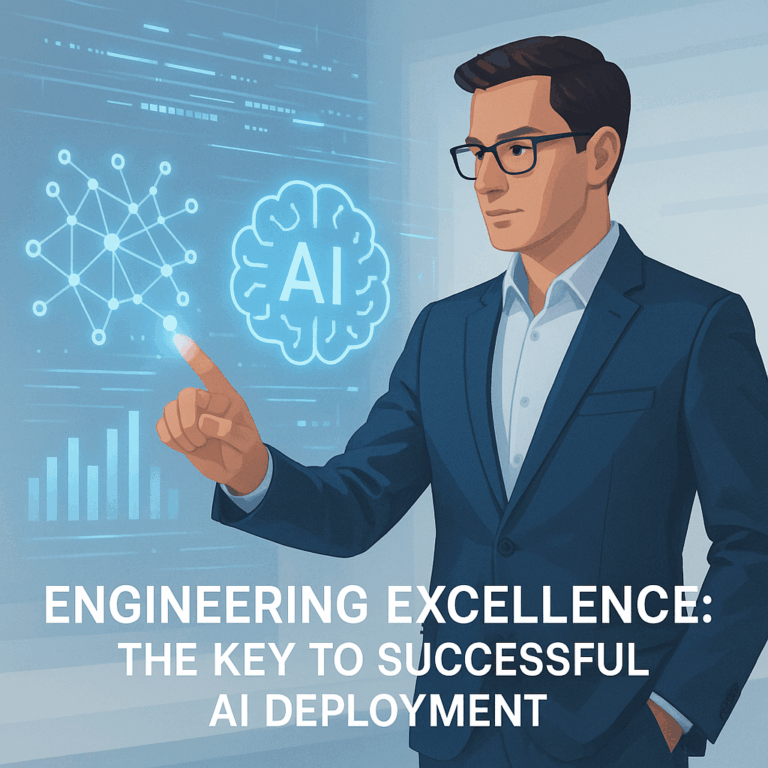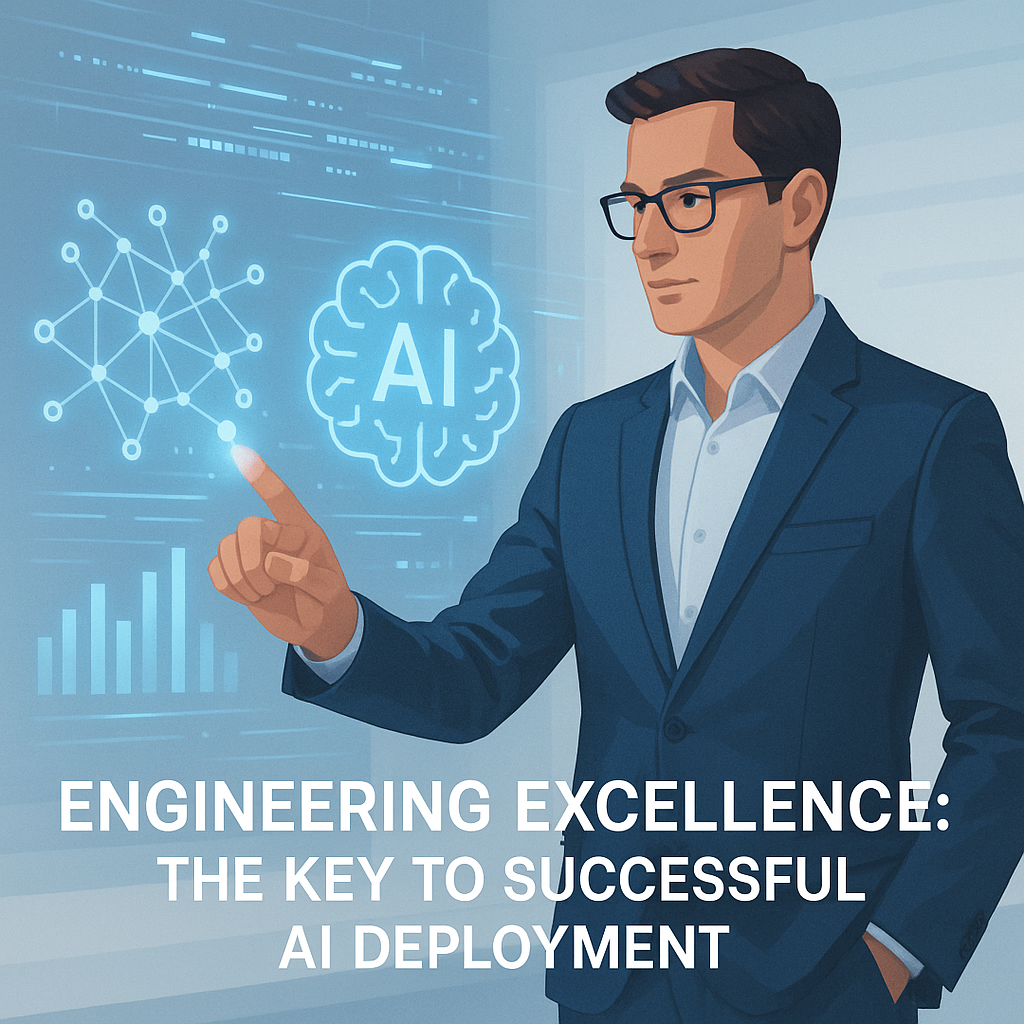Engineering the Backbone of AI Deployment Success
Artificial intelligence (AI) is transforming the landscape of business innovation, enabling organizations to reimagine their operations, marketing strategies, and customer interactions. However, the leap from AI concept to deployment success hinges critically on engineering excellence. Effective AI implementation demands a harmonious blend of systems design, software development, and programming expertise. This synergy ensures that AI solutions are not just theoretically sound but perform reliably in complex, real-world environments.
Achieving this level of integration requires an engineering mindset centered on precision, scalability, and adaptability. Engineering teams act as the bridge between abstract machine learning models and tangible business outcomes. They orchestrate the deployment infrastructure, optimize data pipelines, and embed AI algorithms into existing technology stacks—all while maintaining the robustness and responsiveness vital for sustained business innovation.
Foundations of AI Deployment: Engineering’s Core Role
The foundation of a successful AI deployment lies in intelligent systems design, which typically begins well before coding begins. Engineers analyze legacy systems and operational workflows to understand data flow, bottlenecks, and potential points of failure. This assessment informs strategic decisions about integrating AI models within the existing technology in business environments. Key considerations include data accessibility, storage optimization, and real-time processing capabilities.
Software development teams build on this groundwork by crafting scalable, maintainable codebases that translate AI models into production-ready applications. The programming phase often focuses on automating decision-making processes, generating predictive insights, and enhancing user experience. Here, engineering prowess ensures that performance bottlenecks are minimized and resources, such as computational power and memory, are efficiently allocated.

Overcoming Challenges in Scaling AI Solutions
Scaling AI from prototype to production reveals technical hurdles that only strong engineering can surmount. Variability in data quality and volume can undermine machine learning algorithms, leading to inconsistent output. Engineers apply data engineering techniques to clean, transform, and normalize datasets, setting the stage for reliable model training and inference.
Another challenge is deploying AI solutions across distributed computing environments. Whether leveraging cloud infrastructure or on-premises servers, engineers must design fault-tolerant architectures that ensure uptime. Containerization, microservices, and orchestration tools like Kubernetes are critical engineering enablers that bring flexibility and resilience to AI implementations.
Furthermore, security and compliance considerations cannot be overlooked. Engineering teams implement encryption protocols, secure APIs, and audit trails to protect sensitive information and maintain user trust, which is paramount in business applications.
Engineering AI Integration with Legacy Systems
One of the most pressing business challenges is integrating AI into legacy systems that were never designed for modern, data-driven intelligence. The engineering approach here is highly pragmatic: develop middleware and application programming interfaces (APIs) that allow AI modules to communicate seamlessly with existing software. This involves reverse engineering parts of legacy codebases to ensure compatibility without wholesale system replacement.
Additionally, incremental integration strategies help businesses mitigate risks. Engineers can deploy AI components in isolated modules or pilot programs, then progressively scale successful models across departments. This phased approach preserves operational stability and fosters organizational buy-in—critical factors for technology innovation.
Driving AI-Enabled Business Innovation Through Engineering
When engineering teams successfully marry AI with business processes, the impact ripples across multiple domains. Marketing benefits from predictive analytics that tailor campaigns dynamically, enhancing customer engagement. Systems design optimized for AI elevates supply chain logistics and product lifecycle management. Within robotics, AI-powered control algorithms create more adaptive and autonomous solutions, exemplifying the future of computing.
This convergence also propels new opportunities for software development. Developers innovate novel user interfaces powered by natural language processing and computer vision, transforming human-computer interactions. Engineering excellence thus catalyzes technology innovation, turning visionary AI concepts into operational advantages that differentiate businesses competitively.
Recommendations for Engineering-Driven AI Success
1. **Embed Engineering Early in AI Strategy**
Successful AI deployment requires engineering input from the inception of AI projects. Cross-functional teams involving engineers, data scientists, and business leaders can ensure alignment between technical feasibility and business goals.
2. **Invest in Robust Data Engineering Practices**
Clean, well-structured data is the lifeblood of effective AI models. Prioritize data engineering frameworks and tools that guarantee data integrity and accessibility across systems.
3. **Adopt Scalable, Modular Architectures**
Design AI systems with modularity and scalability in mind. Technologies like container orchestration and microservices enable seamless scaling and reduce redevelopment overhead.
4. **Develop Middleware for Legacy Integration**
Leverage APIs and middleware layers to integrate AI with legacy systems. This approach balances innovation with operational stability.
5. **Focus on Security and Compliance**
Engineer AI deployments with built-in security measures and continuous monitoring to safeguard data and comply with regulatory requirements.
6. **Encourage Continuous Learning and Adaptation**
The AI landscape evolves rapidly; engineering teams should embrace agile methodologies to iterate on solutions and incorporate the latest advances in AI and machine learning.
Engineering a Future Empowered by AI
Engineering is the unsung hero behind AI’s transformative power in business contexts. It turns abstract algorithms into tangible tools that drive efficiency, creativity, and profitability. By embedding best practices in systems design, programming, and security, engineering teams unlock the full potential of AI solutions. This orchestrated effort not only advances the future of computing but also propels organizations toward sustained technological leadership. For those ready to innovate, engineering is the key to turning artificial intelligence from a concept into a cornerstone of business success.


